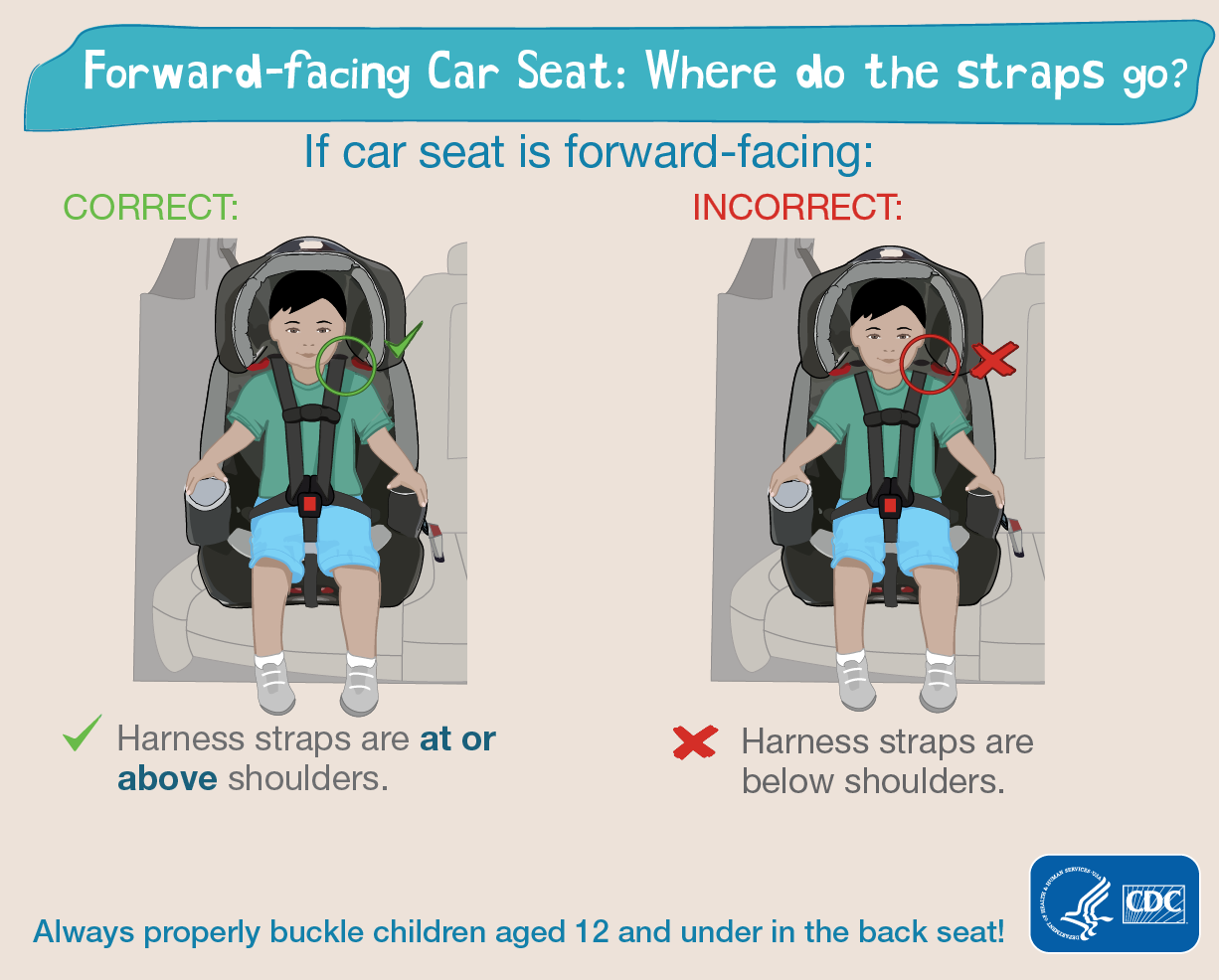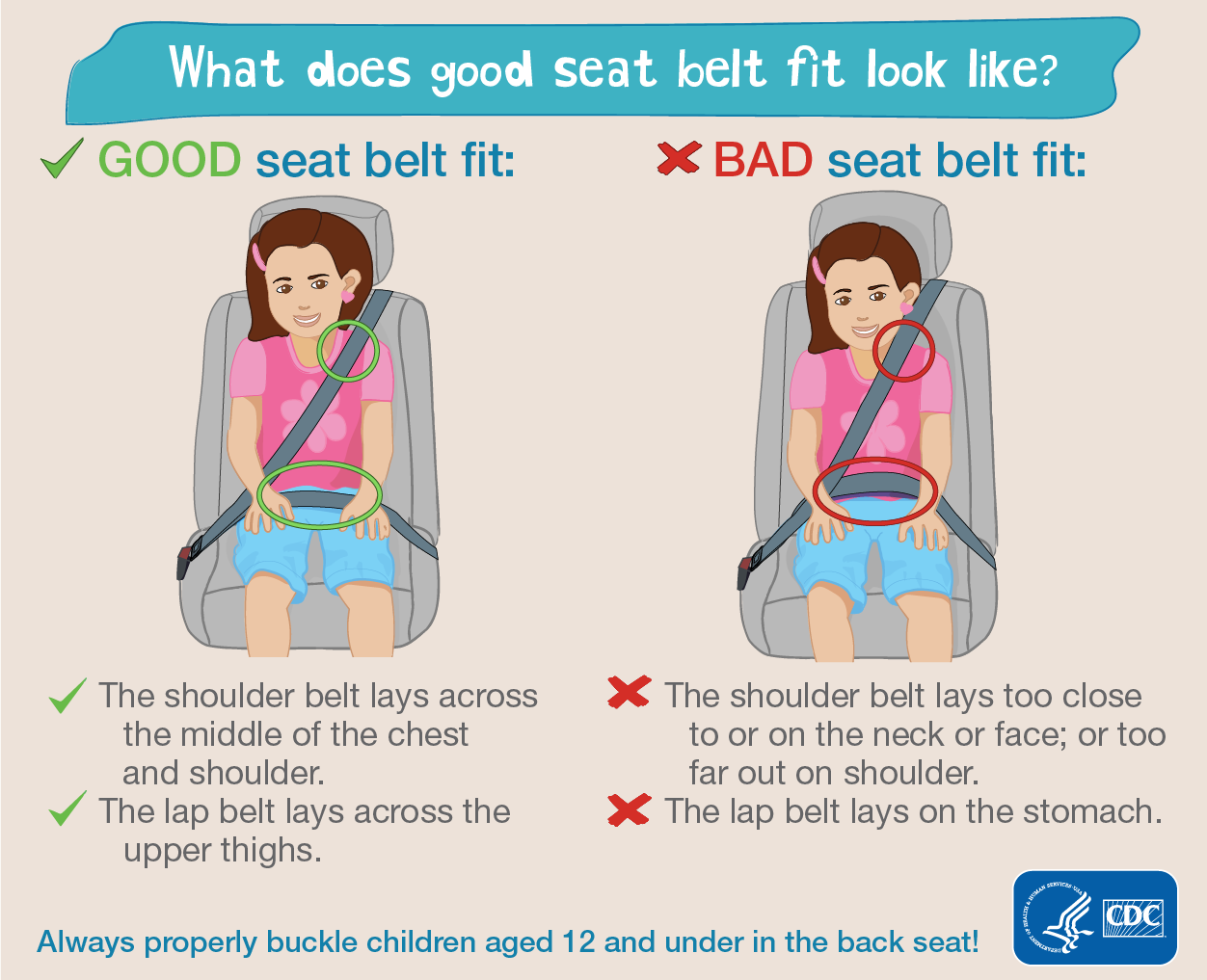Motor vehicle crashes are the leading cause of death for children and youth older than 4 years. Each year, more than 5000 children and adolescents under the age of 21 years die in crashes. For every death, approximately 18 children are hospitalized and more than 400 receive medical treatment of injuries sustained in a crash.
Car safety seats have been shown to be very effective at preventing death and serious injury for our youngest children. Over the past decades, car seat technology has steadily improved in safety and ease-of-use features and provided higher weight and length limits at each stage.
However, these lifesaving and readily available devices are too often misused or not used at all. Reports show 3 out of 4 car safety seats are misused (Cite). The CDC reported in 2019 of the children who died in a crash, 41% of 4–7-year-olds and 27% of children less than 4 years old were unrestrained.
Since parents view their children’s doctors as a reliable source for safety advice, pediatricians can be a huge part of the solution to this nationwide problem. Explore the AAP policy statement and technical report for more guidance on car safety seats including an algorithm to guide implementation of best practice recommendations of car safety seats.
Car Safety Seats
Using the correct car seat can safe a child’s life:
Talking with Families
There are many opportunities during a well child visit that child passenger safety could be discussed.
For example,
- a father mentions they’re going on a long flight for a vacation. A pediatricians can encourage him to bring their car safety seat on the trip with them and read the manual to learn how to use it on a plane.
- A mother comes in with her 1-month-old infant in a car seat with extra padding and a fleece liner in it. Explain that car seats are incredibly safe when used properly and that extra padding can put their baby at risk of injury or breathing difficulty.
- A child is seen after a motor vehicle collision. A pediatrician can make sure his parents know they need to have their car safety seat inspected and replaced.
- A grandmother brings her young grandson in and mentions the only time he naps is if they drive around. Explain how important it is to never leave him alone in the vehicle, even for a brief nap.
Key Messages for Families
- Everyone should ride properly restrained on every trip. Children must never ride unrestrained.
- Your child is safest in the car safety seat that fits them. It is important to stay in each stage as long as possible.
- Riding rear facing is safest for your infant and toddler. Children are much more flexible than adults and generally find a comfortable position riding rear facing. Did you know, children riding forward facing are much more likely to experience leg injuries than rear facing?
- I am sure your child looks old enough for a seat belt but we want to make sure the seat belt would not cause harm in the event of a crash. It is important to keep your child in a booster seat until the lap and shoulder strap fit them properly and their knees bend at the end of the seat.
- Car safety seat are most effective when used properly. Child passenger safety technicians can help you install your child’s seat correctly.
A certified child passenger safety technician can be an important community partner. Find out if any are employed by your medical facility. If so, are they available to talk to families or provide consultations? Do they have special needs training? If you don’t have a certified technician available, you can locate one near to you by visiting cert.safekids.org.
Last Updated
01/04/2022
Source
American Academy of Pediatrics



